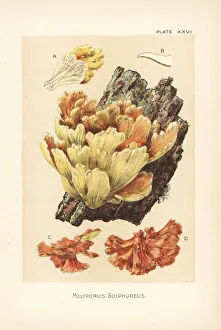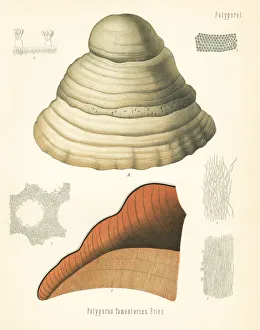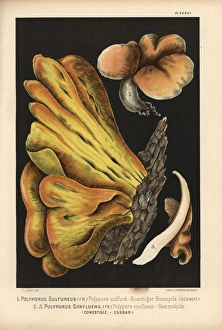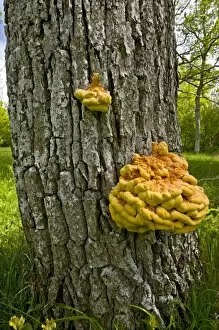Polyporus Collection
Polyporus, also known as the Crab-of-the-woods or Laetiporus sulphureus, is a fascinating genus of polypore mushrooms
All Professionally Made to Order for Quick Shipping
Polyporus, also known as the Crab-of-the-woods or Laetiporus sulphureus, is a fascinating genus of polypore mushrooms. These unique fungi belong to the family Polyporaceae and are widely distributed across various habitats. One notable species within this genus is the Tinder fungus or hoof fungus (Fomes fomentarius). This particular mushroom has been used for centuries as a fire-starting material due to its flammable properties. It was even utilized by ancient civilizations as tinder for starting fires. Interestingly, some species resemble fossilized corals such as Astraea and Maeandrina. Their intricate patterns and shapes make them appear like remnants from an ancient underwater world. Another well-known member of this genus is the Bracket fungus (Laetiporus sulphureus), commonly found growing on trees. Its vibrant orange-yellow coloration adds a touch of beauty to forest landscapes. The Birch bracket mushroom (Polyporus betulinus) is another noteworthy variety that primarily grows on birch trees. Its presence often indicates decay in the tree, serving an important ecological role in breaking down dead wood. Meanwhile, the Scaly polypore (Polyporus squamosus) boasts distinctive scales on its cap surface, making it easily recognizable among other mushroom varieties. One particularly striking species is the Banded Polypore (Trametes versicolor), which displays bands of different colors resembling a painter's palette. This common polypore saprophyte fungus can be frequently spotted on wood stumps during autumn months. Amongst these diverse members lies two giants - Polyporus gigantius and Polyporus dryadeus - both impressively large mushrooms that capture attention with their sheer size alone. Lastly, we have Chicken-of-the-woods / Sulphur Polypore growing abundantly on Oak trees.













